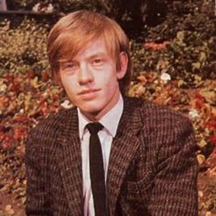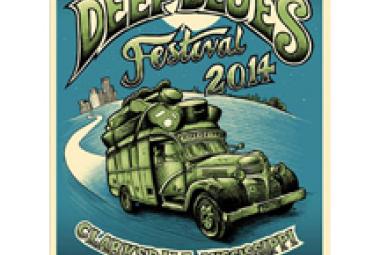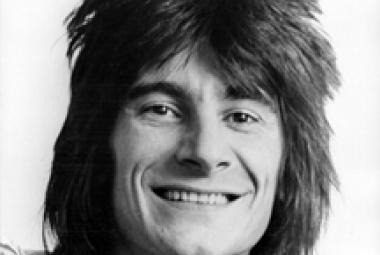Brian Jones (28 February 1942 – 3 July 1969) was an English musician, the founder and the original leader of The Rolling Stones. Jones was a multi-instrumentalist, with his main instruments being the guitar, harmonica and keyboards. Although he was originally the leader of the group, Jones’s fellow band members Mick Jagger and Keith Richards soon overshadowed him, especially after they became a successful songwriting team. Jones developed a serious drug problem over the years, and his role in the band steadily diminished. Original Rolling Stones bass guitarist Bill Wyman said of Jones, “He formed the band. He chose the members. He named the band. He chose the music we played. He got us gigs. . . . He was very influential, very important, and then slowly lost it – highly intelligent – and just kind of wasted it and blew it all away.” (More from Wikipedia)
In 1962, Dick Taylor was in a band called Little Boy Blue and the Blue Boys with Mick Jagger and Keith Richards. Brian Jones was recruiting members for his own band, and these three joined up along with Ian Stewart. Jones came up with the name Rollin’ Stones for the band; they went through several drummers before Charlie Watts joined the line-up.
The name of the fairly prominent neo-psychedelic outfit called the Brian Jonestown Massacre is a portmanteau of Brian Jones, a founding member of the Rolling Stones with Jonestown Massacre, the notorious mass suicide of the flock of Rev. Jim Jones in their compound in Guyana after assassinating Congressman Leo Ryan – the phrase “drinking the Kool-Aid” arose from what happened there.
The first performance by what was then called the Rollin’ Stones – named after the landmark blues song “Rollin’ Stone” by Muddy Waters – took place on July 12, 1962 at the Marquee Club in London. The line-up at that time was Mick Jagger (lead vocals, harmonica), Keith Richards (guitar), Brian Jones (guitar, harmonica), Ian Stewart (piano), Dick Taylor (bass), and Mick Avory (drums – Avory himself recalls that it was actually Tony Chapman). Mick Jagger and Keith Richards had known each other as children and were reacquainted by Dick Taylor, who was a mutual friend. Bill Wyman replaced Dick Taylor on bass in December 1962; Taylor then became one of the founding members of the Pretty Things, a band that is as long-lived and (in some circles) as beloved as the Stones, though with a significantly lower profile. When Charlie Watts joined the band on drums in January 1963, and with Ian Stewart removed from the official band membership (also in 1963), the classic line-up of the Rolling Stones was born.
* * *
Ron Silva says of the meeting of the Crawdaddys with Greg Shaw: “In my opinion it would be fairly safe to say that [Steve] Potterf and I blew Shaw’s mind that day. We walked in, and Potterf had this absolutely devout Brian Jones thing going with the hair, and we both had the complete Downliners Sect ’64 look from head to toe. It was totally ridiculous and great at the same time. Shaw said, ‘Go back to San Diego and make an album, preferably for next to nothing, if you don’t mind.’ We didn’t.”
(January 2015/2)
* * *
Hardly anyone knew the other three band members in the Rolling Stones; well, maybe multi-instrumentalist Brian Jones – unquestionably the most under-appreciated Stone (who was saddled with the title of “lead guitarist” while playing alongside Keith Richards) – who was the “cute one” with the blond hair. But the two men who are rightfully renowned as the greatest rhythm section in the history of rock music – bass guitarist Bill Wyman and drummer Charlie Watts – were virtually unknown to the American public. Or at least, until I saw that photo in Mad, I certainly didn’t know their names or what they looked like.
(May 2015)















